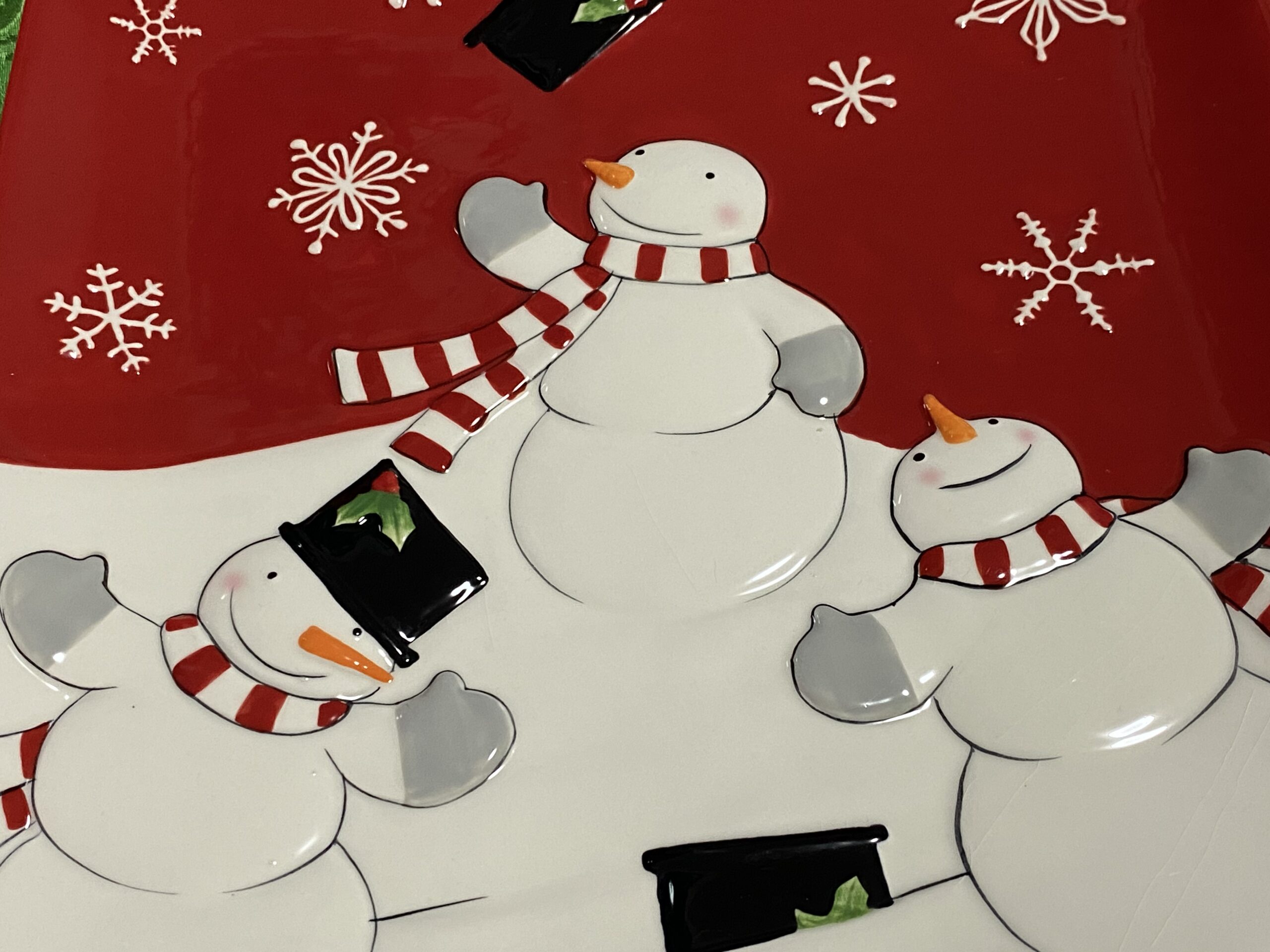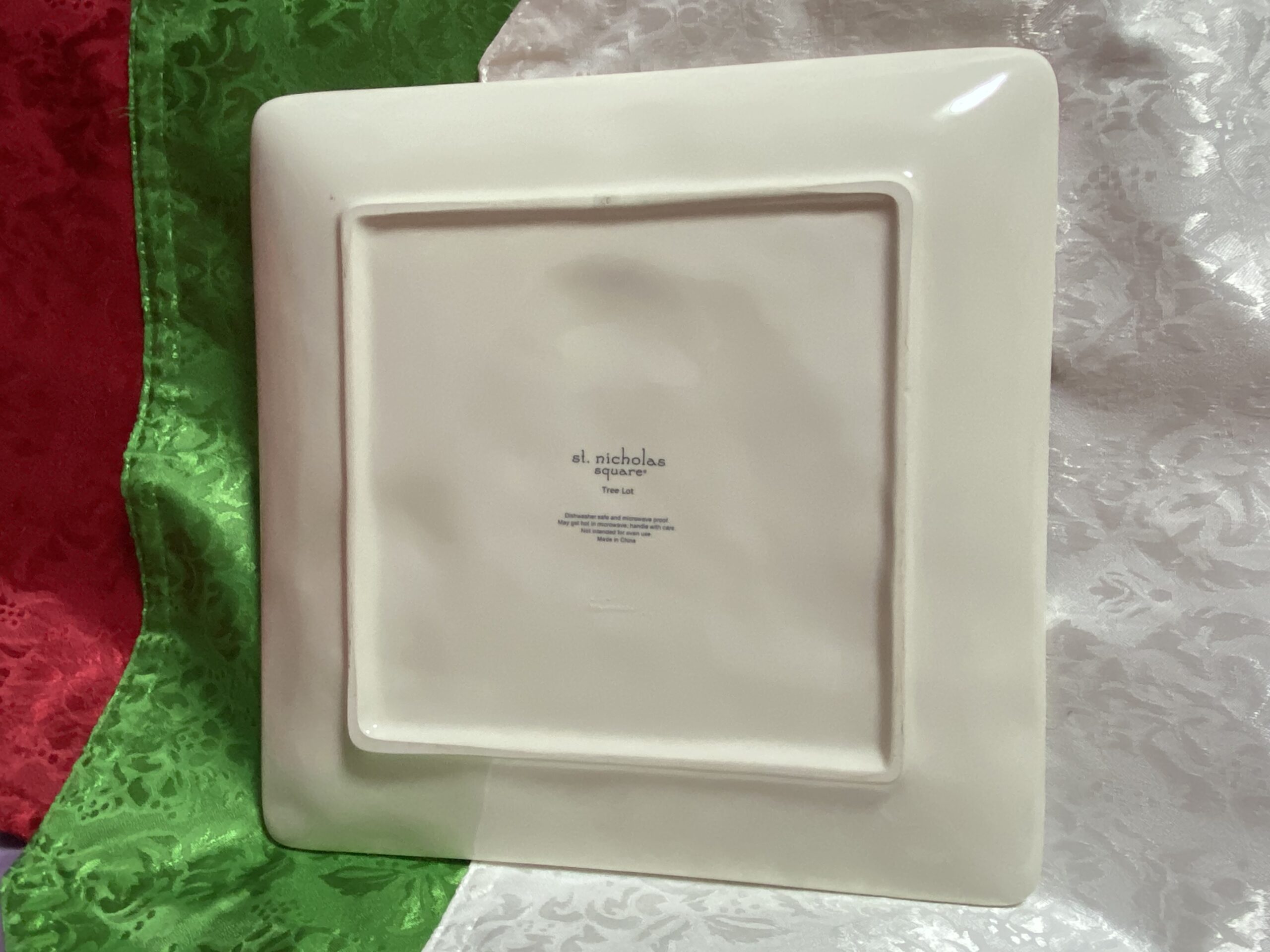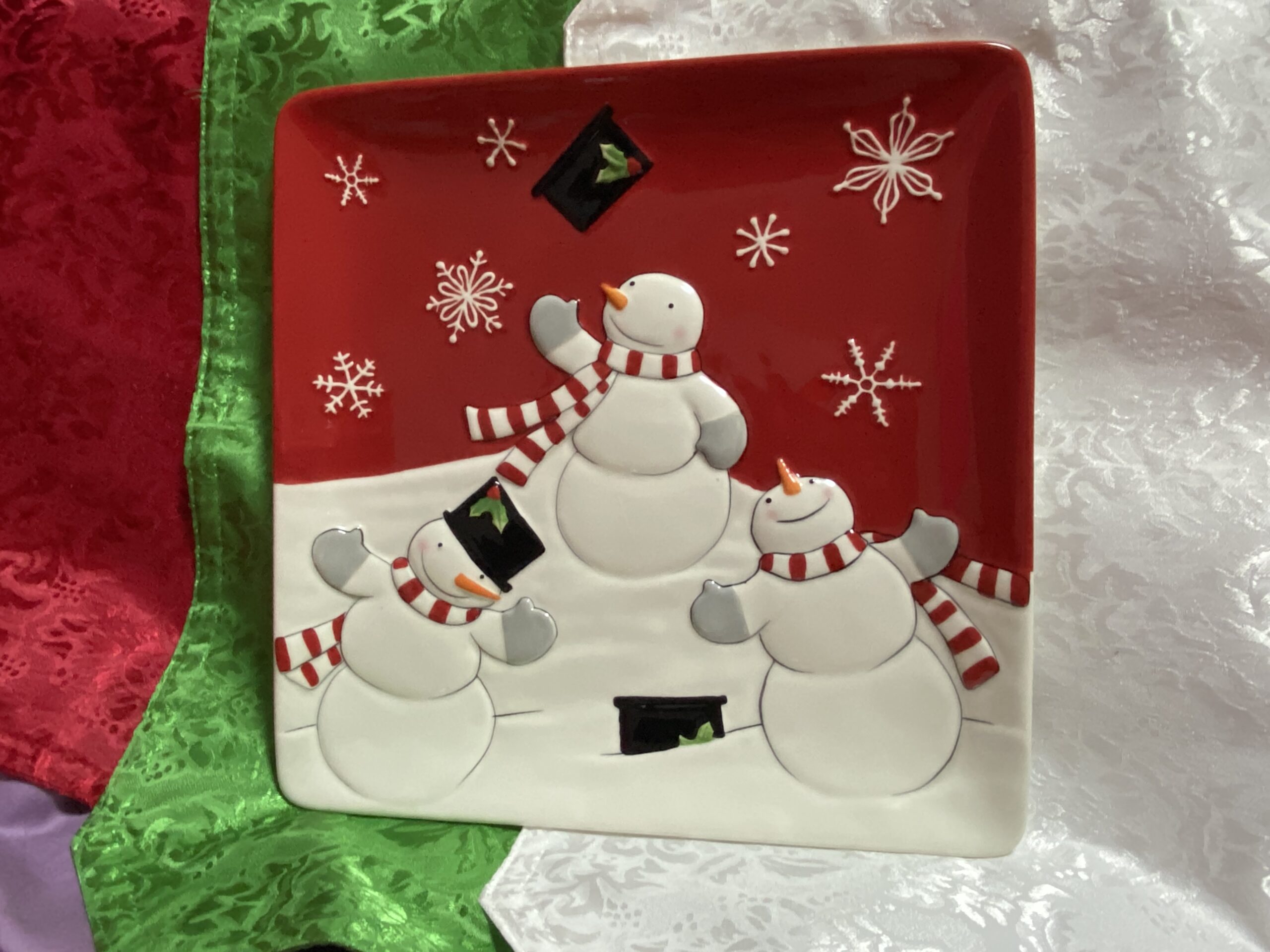St. Nicholas Square Tree Lot Snowman Christmas Dish: 55,800 ppm Lead on the food surface (1,297 ppm Cadmium, which causes cancer)


 Published: Tuesday, December 14, 2021
Published: Tuesday, December 14, 2021
How much Lead is “too much” Lead?
In any item intended for use by children, Lead content must be below 90 ppm in the paint, glaze, or coating for the item to be legal (and any Lead present in the substrate of an item needs to be below 100 ppm), as regulated by the Consumer Product Safety Commission.
(Crazy-but-true fact: Dishes and cookware are not covered by this regulatory standard, because [except in the State of Washington] dishes and cookware are not considered to be “items intended for use by children” — despite the obvious fact that CHILDREN CONSUME FOOD THAT IS PREPARED in the COOKWARE and SERVED on the DISHES.)
XRF Readings for St. Nicholas Square Snowman Plate
Reading #1) Red glazed area on the food surface
40-second test
- Lead (Pb): 37,800 +/- 500 ppm
- Cadmium (Cd): 1,297 +/- 31 ppm
- Mercury (Hg): 23 +/- 15 ppm
- Bromine (Br): non-detect
- Chromium (Cr): non-detect
- Iron (Fe): 899 +/- 74 ppm
- Copper (Cu): 88 +/- 17 ppm
- Zinc (Zn): 93 +/- 12 ppm
- Selenium (Se): 546 +/- 22 ppm
- Zirconium (Zr): 17,200 +/- 300 ppm
- Tin (Sn): 87 +/- 8 ppm
- Barium (Ba): 1,227 +/- 43 ppm
- Platinum (Pt): 156 +/- 55 ppm
- No other metals were detected in consumer goods mode.
Reading #2) White glazed area on the food surface
30-second test
- Lead (Pb): 40,000 +/- 500 ppm
- Cadmium (Cd): non-detect
- Mercury (Hg): non-detect
- Bromine (Br): non-detect
- Chromium (Cr): non-detect
- Iron (Fe): 716 +/- 68 ppm
- Zinc (Zn): 25 +/- 9 ppm
- Barium (Ba): 879 +/- 33 ppm
- No other metals were detected in consumer goods mode.
Reading #3) Black glaze on the food surface of the dish
30-second test
- Lead (Pb): 39,800 +/- 500 ppm
- Cadmium (Cd): non-detect
- Mercury (Hg): non-detect
- Bromine (Br): non-detect
- Chromium (Cr): 324 +/- 143 ppm
- Iron (Fe): 4,631 +/- 142 ppm
- Cobalt (Co): 4,878 +/- 128 ppm
- Nickel (Ni): 369 +/- 50 ppm
- Zinc (Zn): 76 +/- 12 ppm
- Zirconium (Zr): 780 +/- 18 ppm
- Barium (Ba): 704 +/- 33 ppm
- No other metals were detected in consumer goods mode.
Reading #4) Gray glaze on the food surface of the dish
30-second test
- Lead (Pb): 55,800 +/- 900 ppm
- Cadmium (Cd): non-detect
- Mercury (Hg): non-detect
- Bromine (Br): non-detect
- Chromium (Cr): 239 +/- 155 ppm
- Iron (Fe): 784 +/- 84 ppm
- Copper (Cu): 83 +/- 21 ppm
- Zinc (Zn): 4,857 +/- 99 ppm
- Zirconium (Zr): 18,000 +/- 400 ppm
- Tin (Sn): 1,104 +/- 33 ppm
- Barium (Ba): 1,399 +/- 58 ppm
- No other metals were detected in consumer goods mode.
Reading #5) Orange glaze on the food surface of the dish
30-second test
- Lead (Pb): 41,800 +/- 600 ppm
- Cadmium (Cd): 234 +/- 9 ppm
- Mercury (Hg): non-detect
- Bromine (Br): non-detect
Chromium (Cr): non-detect - Iron (Fe): 1,570 +/- 91 ppm
- Cobalt (Co): 338 +/- 42 ppm
- Copper (Cu): 27 +/- 16 ppm
- Zinc (Zn): 48 +/- 11 ppm
- Zirconium (Zr): 4,869 +/- 92 ppm
- Tin (Sn): 1,104 +/- 33 ppm
- Barium (Ba): 992 +/- 39 ppm
- No other metals were detected in consumer goods mode.
As always, please let me know if you have any questions. I will do my best to answer them personally as soon as I have a moment — but it may be a while (kids underfoot nearly 24/7 since the start of the pandemic, y’know)!
Tamara Rubin
#LeadSafeMama
Owner, Lead Safe Mama, LLC
Amazon links are affiliate links. If you purchase something after clicking on one of these links, Lead Safe Mama, LLC may receive a small percentage of what you spend — at no extra cost to you.
For those new to this website:
Tamara Rubin is a multiple-federal-award-winning independent advocate for childhood Lead poisoning prevention and consumer goods safety, and a documentary filmmaker. She is also a mother of Lead-poisoned children (two of her sons were acutely Lead-poisoned in 2005). Since 2009, Tamara has been using XRF technology (a scientific method used by the U.S. Consumer Product Safety Commission) to test consumer goods for toxicants (specifically heavy metals — including Lead, Cadmium, Mercury, Antimony, and Arsenic). All test results reported on this website are science-based, accurate, and replicable. Items are tested multiple times to confirm the test results for each component tested. Tamara’s work was featured in Consumer Reports Magazine in February of 2023 (March 2023 print edition).
Never Miss an Important Article Again!
Join our Email List










 Published: Tuesday, December 14, 2021
Published: Tuesday, December 14, 2021
